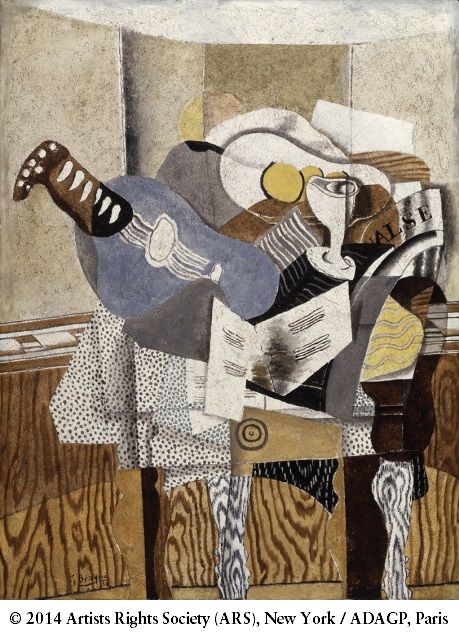Georges Braque, The Blue Mandolin, 1930

The Work
This still life shows us a group of objects on a table. We can see a mandolin, a glass, a bowl with round objects (perhaps fruit), pages of printed sheet music, and one page showing the word "WALTZ." The texture of the wall is made up of a mixture of oil paint and sand, and there is a false wood grain on the lower wall and on the legs of the table. We also see a tablecloth decorated with polka dots.
Historical Moment
In the early 1930s, France was suffering an economic depression. Braque was a soldier in the First World War, and he had received a serious head injury. After he recovered, he declared that he was not interested in politics, and he dedicated himself to showing everyday objects in his paintings.
The Genre
The term cubism derives from the word "cube," in reference to the geometric form. Artists like Pablo Picasso, Georges Braque, and Marcel Duchamp wanted to reduce visual images to elementary forms and colors, to achieve a new way of looking. Cubism applied not only to paintings of still lifes, but also to landscapes, portraits, and sculptures.
The Artist
Georges Braque (1882-1963) was born in Argenteuil, and was trained as a decorator. While living in Paris, he became a friend and collaborator of the Spanish painter Pablo Picasso, and together they founded cubism. Today Braque is sometimes called "the French Picasso." Braque loved music, and often used musical instruments in his paintings.

